When Nature Strikes: Space Weather
When people think of natural disasters, they tend to think of earthquakes, tornadoes, or hurricanes. But Sarah Gibson, an astrophysicist at the National Center for Atmospheric Research is more concerned about a phenomenon called space weather, that begins on the Sun millions of miles from Earth, and could mean lights out for the entire world.
Space Weather is the term scientists use to describe the ever changing conditions in space. Explosions on the Sun create storms of radiation, fluctuating magnetic fields, and swarms of energetic particles. These phenomena travel outward through the solar system with the solar wind. Upon arrival at Earth, they interact in complex ways with Earth's magnetic field, creating Earth's radiation belts and the aurora. Some space weather storms can damage satellites, disable electric power grids, and disrupt cell phone communications systems.
Scientists like Sarah Gibson are studying the behavior of the Sun to help warn against a serious solar storm should it threaten Earth. "When Nature Strikes" is produced by NBC Learn in partnership with the National Science Foundation.
When Nature Strikes: You Be the Solar Scientist! Classroom Activity
You might also be interested in:
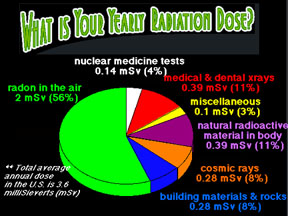
Radiation comes in two basic types: electromagnetic radiation transmitted by photons, and particle radiation consisting of electrons, protons, alpha particles, and so forth. Electromagnetic radiation,
...more
The force of magnetism causes material to point along the direction the magnetic force points. This property implies that the force of magnetism has a direction. As shown in the diagram to the left, the
...more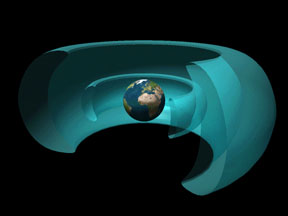
One main type of radiation, particle radiation, is the result of subatomic particles hurtling at tremendous speeds. Protons, cosmic rays, and alpha and beta particles are some of the most common types
...more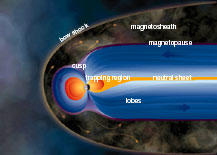
The Earth has a magnetic field with north and south poles. The magnetic field of the Earth is enclosed in a region surrounding the Earth called the magnetosphere. As the Earth rotates, its hot core generates
...more
The Earth's radiation belts are one component of the larger and more complex system called the magnetosphere. The radiation belts of the Earth are made up of energetic, electrically charged particles or
...more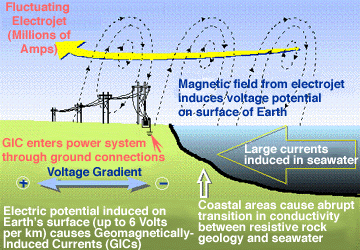
Space weather "storms" can cause problems for the systems we use to generate and transmit electrical power here on Earth. In extreme cases, large space weather events can even cause massive blackouts over
...more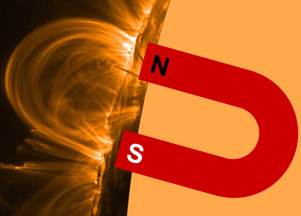
An active region on the Sun is an area with an especially strong magnetic field. Sunspots frequently form in active regions. Active regions appear bright in X-ray and ultraviolet images. Solar activity,
...more













